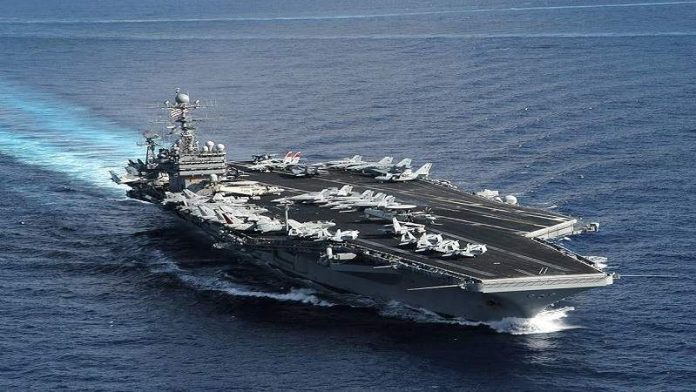In a new manifestation of the success of the historic strategic deterrence equation imposed by the Yemeni Armed Forces on American aircraft carriers, Washington announced this week the replacement of the aircraft carrier “USS Roosevelt” just three weeks after its deployment, without it even approaching the Yemeni maritime operational area.
This clearly reflects an attempt to avoid admitting that Yemen has made the region unsafe for the US Navy.
Deputy Pentagon spokesperson Sabrina Singh stated last Friday that the US Secretary of Defense ordered the dispatch of the aircraft carrier “Abraham Lincoln” to replace the “Roosevelt,” which was initially supposed to replace the “Eisenhower” that fled the Red Sea after being chased by the Yemeni Armed Forces with several missile operations.
The US Central Command had announced the arrival of the “Roosevelt” to the Fifth Fleet area on July 12, just three weeks ago, to participate as a replacement for the fleeing “Eisenhower” in the operations of the so-called “Sentinel Shield” coalition in the Red Sea and Gulf of Aden. However, it did not even come close to this theater and instead headed towards the Persian Gulf, adhering to a cautious route in the far east of the Arabian Sea and the Indian Ocean to stay as far away as possible from the range of Yemeni ballistic missiles.
It seems that the US military could not find another excuse to justify the “Roosevelt’s” reluctance to approach the operational area where it was supposed to perform its tasks, resorting to announcing its replacement to divert attention and avoid questions that began to arise about the aircraft carrier’s presence far from the “Sentinel Shield” coalition’s operational theater. It appears that it will continue to station there for several additional weeks awaiting the arrival of the replacement carrier.
During her recent press conference, Deputy Pentagon spokesperson was asked about the presence of US naval vessels in the Red Sea currently. One journalist pointed out that this presence has recently shrunk to the minimum extent, which Singh tried to evade by saying that “the absence of US warships does not mean the absence of other coalition ships.”
The replacement of the “Roosevelt,” which did not approach the Yemeni operational area, confirms the strategic deterrence equation imposed by the Armed Forces in recent months, making the Red Sea, Gulf of Aden, and Arabian Sea unsafe for US aircraft carriers and warships. This represents a significant and unprecedented shift given the historical dominance of the US in the region’s waters.




















